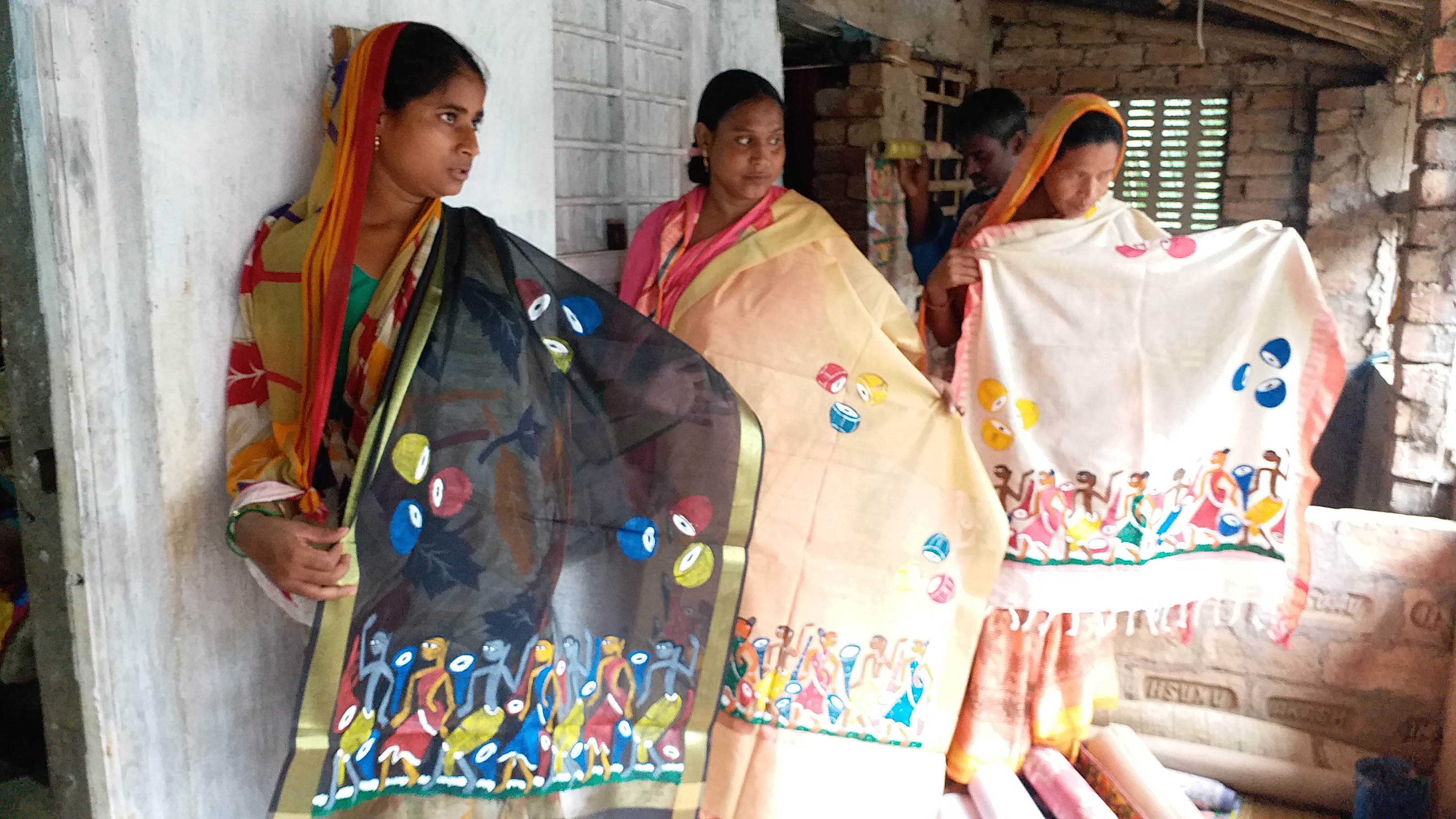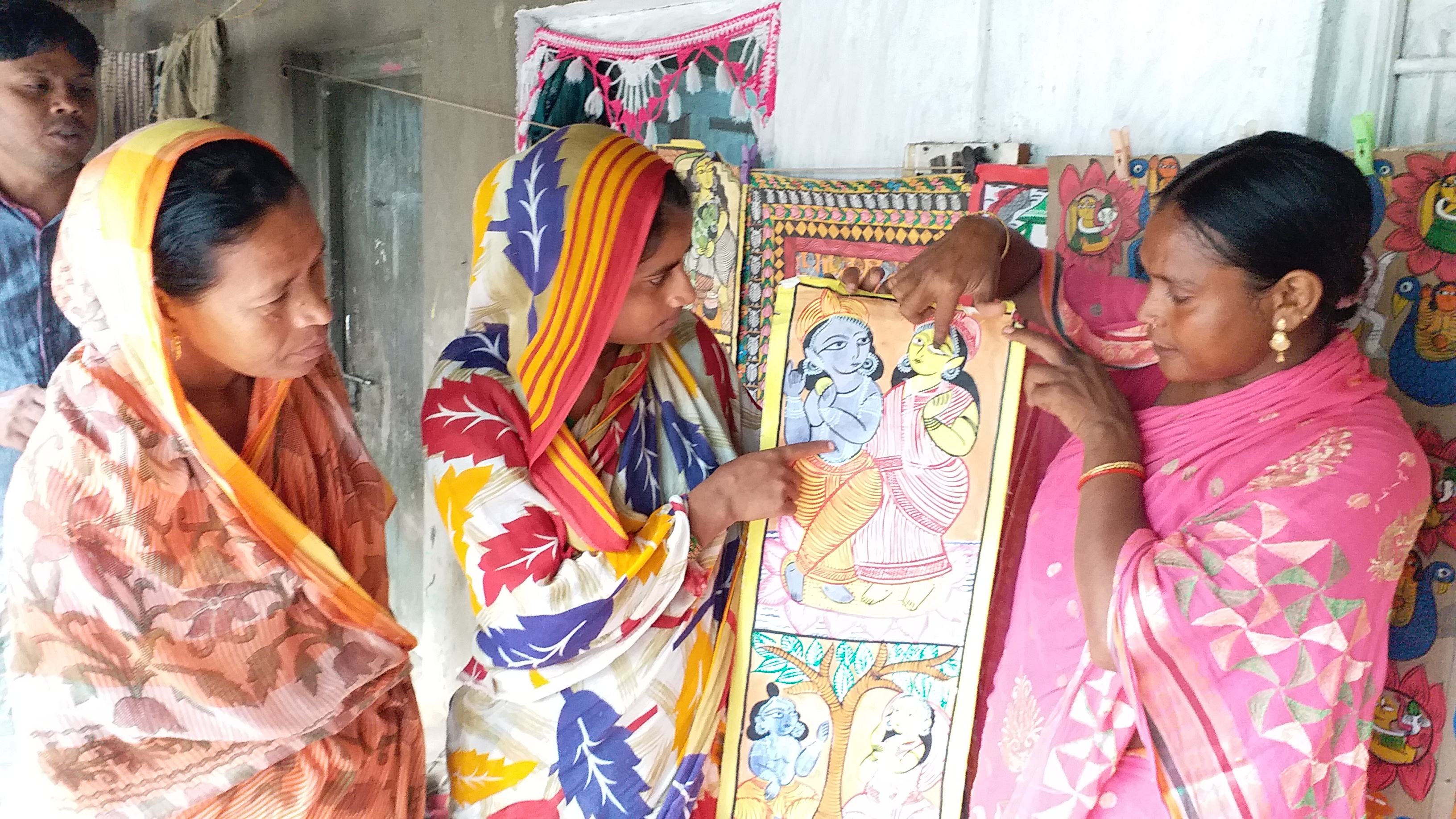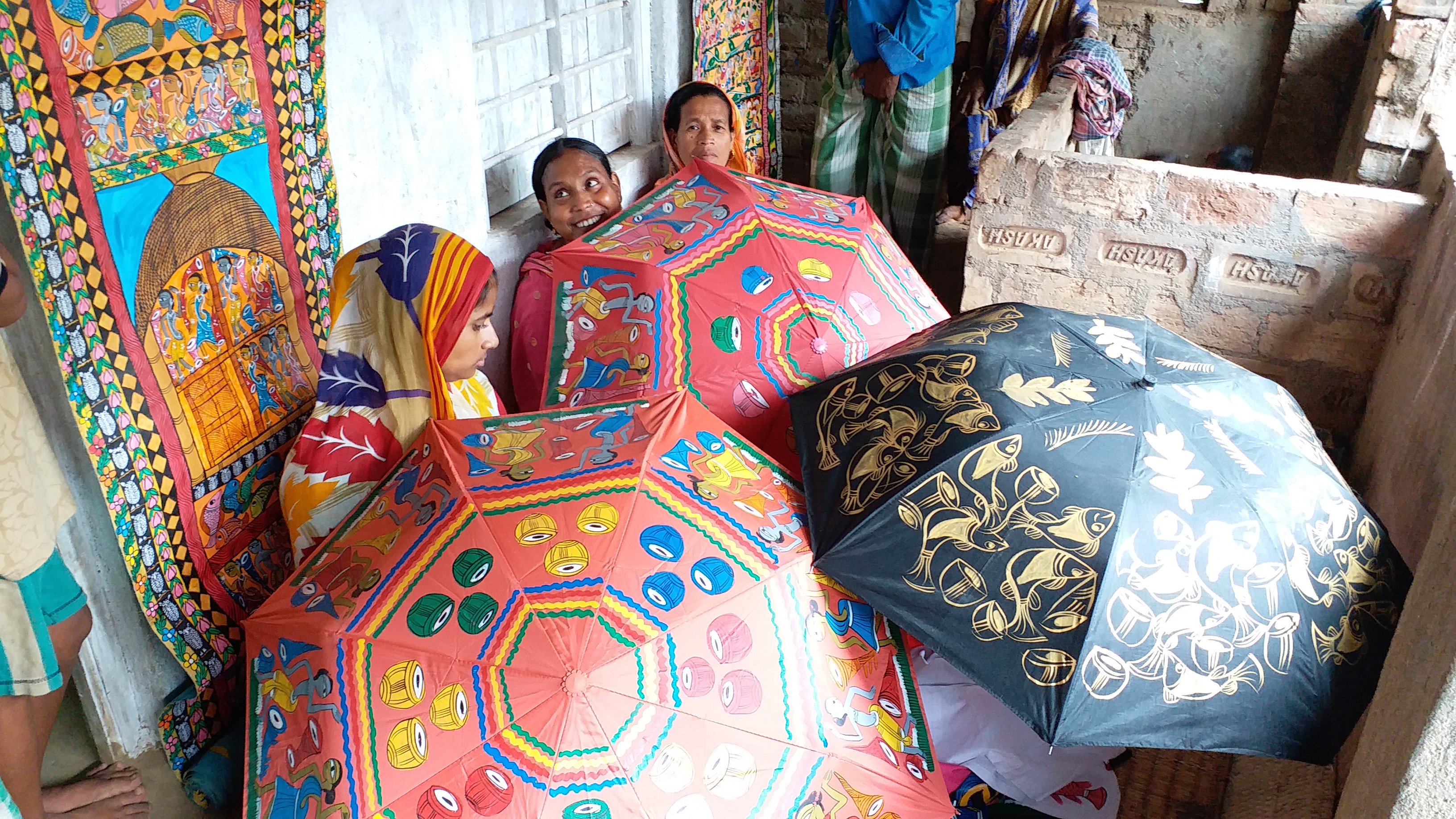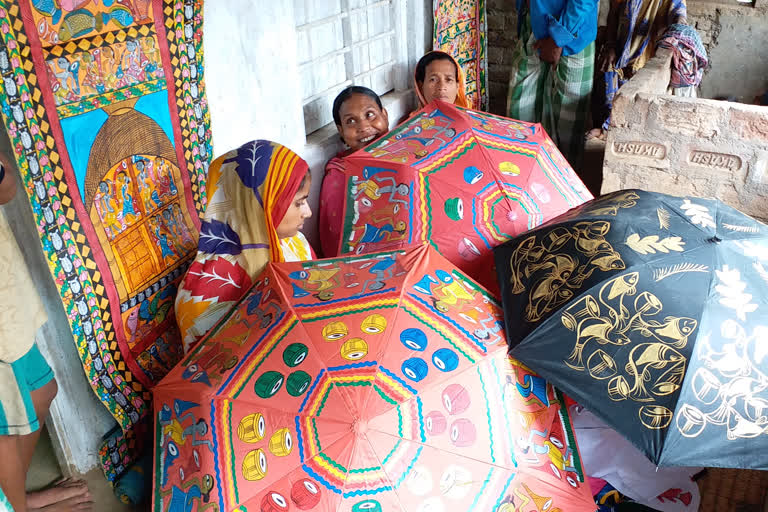Panskura (West Bengal): Pat chitras, series of paintings on a long string of paper, are a traditional art form of West Bengal, and artisans have for centuries used the art to depict both mythological sagas and contemporary issues.
The artists, known as 'Patuas', earn their livelihood by narrating the story depicted in the art through songs, mostly in rural areas. The art usually depicts mythical characters or from the Hindu epics Ramayana and Mahabharata, but also portray the present-day developments.
The art form, which had already taken a hit after television and even the internet to some extent penetrated into the villages, is on a further decline ever since the COVID-induced lockdown was imposed. Many Patuas had already shifted to other professions, but the handful of them who continued to cling on to the art and decided to carry on the legacy, have been badly hit by the lockdown and travel disruptions.
With all congregations and fairs, which formed the dais for these artists, being banned due to the COVID situation, many Patuas have now improvised, and are now painting on sarees, salwar-kameez, dupattas and even T-shirts to ensure an alternative source of income to sustain their livelihood.

Over time, Panskura in Purba Medinipur district has been established as the hub of the Patuas, who live and also create their art here. Keshbari village of Panskura used to be known as the 'Patua village' and around 100 Pat artists still live here.
The main earning season for the artists basically begins from July, as fairs across the state, along with industrial and art fairs across the country start from September onwards and continue till March. Every artist of the village used to venture out to different fairs and earn around Rs 30,000 by the end of the season.
Read: Transgenders learn folk art to survive amid pandemic
Now, with the pandemic having put a full-stop on all such activities, the artists, unable to arrange even one square meal on some days, have decided to try alternative routes of sustenance.

"Earlier, we were one of the main sources of information to the villagers. Through our songs and paintings, we not only showcased mythology, but also brought up social and political issues prevalent in the state and the country. But, that is a thing of the past," said Tushi, an artist.
"We could still sustain after the television came, but the mobile phones and internet have changed the information landscape in rural West Bengal. To make matters worse, the Coronavirus pandemic has robbed us of everything," she added.

Tushi said that inspiration for the novel idea of painting on clothes came from an incident a couple of years ago, when she had visited one of the fairs in Kolkata with a couple of flower vases painted in the traditional patua style.
Read: Dharamshala youth makes bamboo art a source of income
"It was an instant hit and I had received many orders. This time, I thought of replicating the idea on sarees and other fabrics," she said.
Another artist, Tapan, said, "Earlier we used to paint on fabric, but nowadays it is only paper. So, we have expertise in painting on fabric. We have done flower vases and pots and other items. This year, there is no option of fairs. So, we have shifted to painting on fabric."
"Be it sarees or salwar-kameez sets, dupattas, T-shirts or even handkerchiefs, we are trying out every possible variety. Our prices are never beyond the common person's reach and we are now pinning our hopes on these products this festive season," he added.
Artists like Asma and others, are now hopeful that the coming Durga Puja brings them some much needed monetary income. The artists have planned to set up stalls in some select Durga Puja pandals in Kolkata, if they are allowed. "We think people will like this new range of fabric," she said.
Read: At Kerala's heritage village, majestic bronze lamp depicts Ramayana scene



